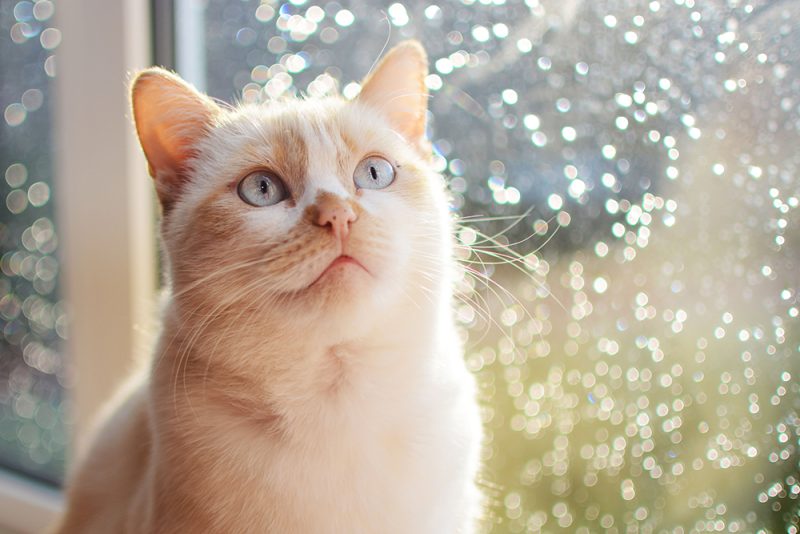Have you ever wondered what your feline friend is trying to communicate, especially when it comes to their expressive little ears? Just like humans use a variety of gestures and facial expressions to convey feelings, cats have their own unique way of expressing themselves through their ear movements and positions. Understanding “cat ear language” can enhance the bond you share with your pet and help you respond appropriately to their needs.
In this article, we’ll explore the fascinating world of cat ear signals, decoding the nuances of how these furry companions convey emotions ranging from curiosity to aggression. Whether you’re a seasoned cat owner or a new pet parent, this guide will equip you with the insights to better interpret your cat’s silent yet eloquent language. Let’s dive in and uncover the secrets behind those captivating ears!
Table of Contents
- Understanding Cat Ear Anatomy and Their Functionality
- Decoding the Different Ear Positions and What They Mean
- Recognizing Signs of Stress and Contentment Through Ear Movements
- Practical Tips for Interpreting Your Cat’s Ear Language in Daily Interactions
- Q&A
- In Retrospect
Understanding Cat Ear Anatomy and Their Functionality
Cat ears are not just adorable features; they are complex instruments of communication and sensory perception. Comprised of several parts like the pinna, ear canal, and tympanic membrane, each component plays a vital role in how cats interact with their environment. The pinna, the outer ear, helps cat ears to capture sounds from various directions, allowing them to detect even the faintest rustle of prey nearby. This remarkable mobility, with the ability to rotate nearly 180 degrees, enables cats to hone in on sounds, enhancing their hunting prowess.
Understanding the position and movement of your cat’s ears can provide valuable insight into their emotional state and intent. For example, when a cat’s ears are forward, it indicates curiosity or interest; backward ears signal irritation or fear. A relaxed cat will often have ears in a neutral position, while flattened ears suggest aggression or discomfort. To illustrate this further, here’s a simple table summarizing different ear positions and their meanings:
| Ear Position | Meaning |
|---|---|
| Forward | Curiosity or interest |
| Backward | Irritation or fear |
| Neutral | Relaxed |
| Flattened | Aggression or discomfort |

Decoding the Different Ear Positions and What They Mean
Understanding your cat’s ear positions can unveil a whole new level of communication between you and your feline companion. Cats are masters of nonverbal communication, and their ears are a critical part of that language. When a cat’s ears are facing forward, it typically indicates curiosity or excitement, suggesting they are alert and engaged with their surroundings. Conversely, when you notice their ears flattened against the head, it’s a clear sign of discomfort or aggression, signaling that they may feel threatened or defensive.
Each subtle shift in ear position conveys nuanced emotions or reactions. Here are some key ear positions to watch for:
- Rotating Ears: This indicates that your cat is listening intently and assessing different sounds around them.
- Half-Closed Ears: When the ears are in a relaxed position but slightly tilted back, your cat is likely feeling calm and at ease.
- One Ear Forward, One Back: This mixed signal often indicates that they are feeling uncertain or conflicted about a situation.
| Ear Position | Meaning |
|---|---|
| Ears Forward | Curiosity or interest |
| Ears Back | Fear or aggression |
| Relaxed Ears | Calm and comfortable |
| Ears Rotating | Attentive to multiple sounds |
Recognizing Signs of Stress and Contentment Through Ear Movements
Understanding your cat’s emotions can be as simple as watching the movements of their ears. When your feline friend is feeling stressed or threatened, you may notice their ears pinned back against their head. This posture often indicates fear or aggression, a signal that they may need some space or reassurance. Conversely, if your cat’s ears are upright and facing forward, it’s a sign of curiosity and engagement. They are likely feeling alert and interested in their surroundings, eager to explore or interact with you.
Additionally, the angle and direction of ear movements can convey a wealth of information about your cat’s overall mood. For instance, if the ears are relaxed and slightly tilted outward, it suggests a state of contentment and relaxation. Meanwhile, quick, twitching movements could indicate excitement or agitation, signaling that your cat is stimulated and possibly overstimulated. Keeping an eye on these subtle ear gestures can provide you with insight into your pet’s emotional state, helping you respond appropriately to their needs.
Practical Tips for Interpreting Your Cat’s Ear Language in Daily Interactions
Understanding your feline friend’s ear positions can enhance your interactions and foster a deeper bond. Here are some key indicators to help you interpret your cat’s ear language:
- Forward-facing ears: When your cat’s ears are perked up and facing forward, it indicates curiosity and interest. This is the perfect time to engage them with a toy or a treat.
- Sideways ears: If your cat’s ears are turned sideways, they are likely feeling unsure or anxious. It’s best to give them some space and observe their behavior.
- Flattened ears: When ears are pressed back against their head, your cat may be feeling threatened or annoyed. A calm approach and avoiding sudden movements can help ease their tension.
Additionally, pay attention to the context of your cat’s environment. For example, if you notice their ears twitching or moving independently, they are likely on high alert, possibly due to a noise or movement nearby. Keeping a mental note of these behavioral cues will allow you to respond appropriately and create a more comfortable atmosphere for your cat:
| Ears Position | Meaning |
|---|---|
| Perked Up | Interested or Curious |
| Slightly Back | Unsure or Apprehensive |
| Flat Against Head | Angry or Frightened |
Q&A
Q&A: Cat Ear Language – What Your Cat’s Ears Are Telling You
Q1: Why are cat ears so important in understanding cat behavior?
A: Cat ears are vital communication tools! Cats are masters of non-verbal communication, and their ears can reveal a lot about their mood and intentions. The position, movement, and orientation of a cat’s ears can indicate whether they are relaxed, curious, frightened, or even agitated.
Q2: What are some common ear positions and what do they mean?
A: Here are a few common ear positions:
- Forward-facing ears: This indicates curiosity and interest; your cat is alert and engaged in its environment.
- Ears slightly turned sideways: Your cat might be feeling uncertain or cautious, but not necessarily threatened.
- Ears flattened against the head: This usually signifies fear, aggression, or irritation. It’s a clear signal that your cat wants to be left alone.
- Ears twitching or moving rapidly: This can indicate excitement or agitation. Your cat is likely trying to focus on sounds around them.
Q3: Can I tell if my cat is in a playful mood just by observing its ears?
A: Absolutely! When your cat is playful, you might notice its ears perked up and facing forward, indicating it’s ready to engage. Additionally, if the ears are twitching while in this position, it often means your cat is anticipating a fun interaction—like a game of chase or pouncing!
Q4: How do I interpret my cat’s ear movements in relation to their overall body language?
A: Always consider ear position in the context of the entire body language. For example, if your cat has its ears forward but its tail is puffed up and stiff, it might feel threatened despite the curious ear position. Conversely, relaxed ears paired with a relaxed body posture indicate comfort and happiness.
Q5: What should I do if my cat’s ears are flattened?
A: Flattened ears can indicate that your cat is feeling threatened, scared, or aggressive. It’s best to give your cat some space and avoid any sudden movements or loud noises that could escalate the situation. Observe from a distance to ensure they feel safe.
Q6: Can different breeds of cats exhibit different ear behaviors?
A: Yes, some breeds may have different ear shapes and sizes that can affect their ear communication. For instance, Scottish Folds have unique folded ears, which might alter their expressive capabilities. However, most fundamental ear behaviors are similar across breeds, so understanding the basic signals remains applicable.
Q7: How can I improve my communication with my cat using its ear language?
A: By paying close attention to your cat’s ears and body language, you can enhance your understanding of their feelings. Responding appropriately—like offering comfort when your cat seems frightened or engaging when they are curious—can help strengthen your bond and improve communication.
Q8: Are there any resources I can refer to for a deeper understanding of cat behavior?
A: Absolutely! Books on feline behavior, like “The Cat Behavior Answer Book” by Arden Moore, along with reliable websites such as the ASPCA and the Humane Society, offer great insights. Additionally, observation and spending quality time with your cat will teach you much about their unique personality and communication style.
By understanding your cat’s ears, you can create a more harmonious environment that caters to their needs and emotions. Happy observing!
In Retrospect
understanding cat ear language offers us a unique insight into our feline friends’ emotional states and intentions. By paying attention to the position and movement of their ears, we can foster a deeper bond and respond more effectively to their needs. Whether your cat’s ears are perked up in curiosity, tilted in interest, or flattened in annoyance, each posture provides valuable clues to their feelings. So, the next time you interact with your furry companion, take a moment to observe those expressive ears. With a little practice, you’ll become fluent in Cat Ear Language, leading to a happier, more harmonious relationship with your beloved pet. Happy cat communicating!















